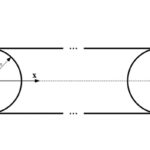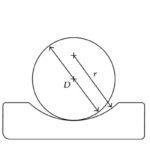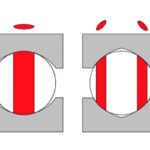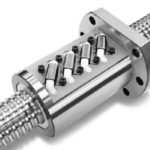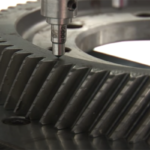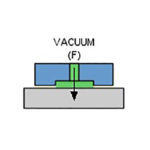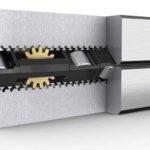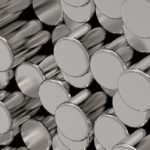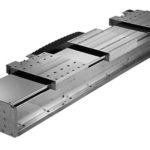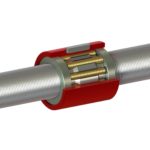In order for a motor to accelerate or decelerate a load, it must overcome the load’s inertia, or resistance to change in motion, as explained in Newton’s First Law. In belt-driven linear motion systems, the motor has to overcome not only the inertia of the applied load, but also the inertia of the belt, pulleys, […]
Motion basics: What is ball conformity in linear guides and screws?
In linear guides and ball screws, load-carrying balls or rollers can ride on planar (flat) raceways, as with non-recirculating linear roller bearings, or in curved raceways, as with ball screws and profiled rail guides. When a ball or roller rides on a planar raceway, the contact between the rolling element and the raceway will be […]
Motion basics: What is differential slip and how does it affect linear bearings?
Linear bearings that use balls or rollers are typically chosen for their ability to carry high loads with very low friction. But rolling elements — including linear bearings — are not friction-free. One of the factors that contributes to friction in linear bearings (along with properties such as surface roughness, elastic hysteresis of the materials, and […]
What’s the difference between ANSI and ISO ball screw load capacity?
The dynamic load capacity of a ball screw is typically defined by the DIN ISO 3408-5 standard, or in some cases, by the JIS B1192-1997 standard, both of which use 1 million revolutions as the basis for load capacity. However, some manufacturers determine ball screw dynamic load capacity according to the ANSI ASME B5.48-1977 standard (reconfirmed […]
Mechanical properties of materials: Hardness
Hardness is a common specification for linear shafts and guides — especially those used with ball and roller bearings, where the guide encounters extremely high loads over very small areas. The hardness of a bearing surface can significantly affect the life of the system and is often accounted for by applying a hardness correction factor […]
How does a vacuum preloaded air bearing work?
Air bearings provide several advantages over rolling element bearings, including higher travel accuracy and reduced friction and heat generation. But because air is compressible, air bearings can be less stiff and exhibit more deflection under load than similar rolling element bearings (although the stiffness characteristics of air bearings are very linear). However, the compressible nature of air […]
What is cage creep and why does it matter?
Several types of non-recirculating linear bearings use a cage to contain the rolling elements, maintain consistent spacing between them, and ensure even load distribution. But in each of these non-recirculating designs, the cage “floats” between the two moving components, meaning that it’s not constrained and can gradually move away from its intended, centered position. This […]
A guide to stainless steels for linear motion components
For applications that involve corrosive environments, designers of linear motion systems can take precautions such as using covers to protect vulnerable components, ordering parts with special coatings or platings, and strategically placing sensitive components within the machine or system to minimize their exposure to hazardous liquids or fumes. But some applications — due to the nature […]
What are some linear motion options for moving multiple loads independently?
From a mechanical standpoint, one of the more challenging applications in linear motion has traditionally been to move two or more loads independently, as is required in some handling, transport, and inspection applications. While using multiple linear systems, or preassembled actuators, is a simple solution mechanically, this option typically requires a significant amount of space […]
Recirculating roller screws: How do they work and what are their benefits?
Screw assemblies that use rollers as the load-carrying element come in several varieties, with the most common being the traditional planetary roller screw, which provides high load capacities and very high rigidity, capable of outperforming ball screw and hydraulic actuators in some heavy-duty applications. But another type of roller screw — the recirculating roller screw — […]

